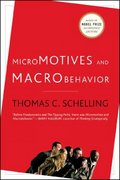Question
A firm is originally operating as a single-price monopolist that faces a market demand curve P(Q)=29716Q and total cost curve equal to TC(Q)=88,000+22Q, with constant
A firm is originally operating as a single-price monopolist that faces a market demand curve P(Q)=29716Q and total cost curve equal to TC(Q)=88,000+22Q, with constant MC equal to MC(Q)=22 for all units produced.
Part (a): How much output does the firm produce and at what price is each unit sold for?
Part (b): Calculate the firm's profit.
The firm now realizes there are actually two distinct groups of consumers that purchase their product, with the following demand functions:
P(q1)=3211/2q1
P(q2)=2851/4q2
Their total and marginal cost curves have not changed.
If the firm wanted to successfully practice third-degree price discrimination:
Part (c): How many units of output would they sell to group 1 and how much will each consumer in group 1 pay?
Part (d): How many units of output would they sell to group 2 and how much will each consumer in group 2 pay?
Part (e): How much profit is earned by the firm when they practice third-degree price discrimination?
Part (f): How much did profits rise by when the firm switched to using price discrimination?
Step by Step Solution
There are 3 Steps involved in it
Step: 1

Get Instant Access to Expert-Tailored Solutions
See step-by-step solutions with expert insights and AI powered tools for academic success
Step: 2

Step: 3

Ace Your Homework with AI
Get the answers you need in no time with our AI-driven, step-by-step assistance
Get Started


